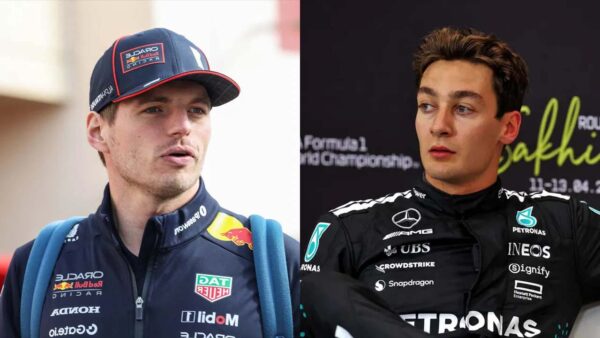F1 Officials rally behind calls for lighter Grand Prix cars to enhance safety, garners strong backing from FIA and drivers
F1 and FIA align on weight reduction of Grand Prix cars amid rising safety concerns.

FIA President Mohammed Ben Sulayem and F1 CEO Stefano Domenicali
According to the FIA’s head of single-seater technical matters, Nikolas Tombazis, the 2026 cars will be comparatively shorter and lighter. The current F1 cars are heavier than ever, raising some severe safety concerns. Since 2008 Grand Prix cars are progressively getting heavier, and drivers have voiced their distress regarding this. FIA president Mohammed Ben Sulayem spoke to Autosport regarding this very issue.
“I come from motorsport, where lighter cars are safer and they won’t use the same amount of fuel,” Sulayem said.“It will be hard to achieve, but everybody wants it,” he continued. F1 CEO Stefano Domenicali too gave his opinion on the weight of Formula One cars, stating that modern additions to the car have resulted in it being heavier. “As you know, with the hybrid engines, with the batteries, the weight is getting higher and that is something that is not really like F1,” Domenicali said.
With the addition of batteries, energy recovery systems, and modern-day safety systems, the minimum weight of the current car is a whopping 798 kg. Back in 2008, cars were about 200 kg lighter than now. Sulayem and Domenicali’s agreement will interest the F1 drivers as they oppose heavy-weight cars.
GPDA President George Russell raised concerns over the increasing weight of F1 cars

For the 2022 ground effect regulations, the minimum weight increased to 790kg and was then raised by 8kg to 798kg on the eve of the season. This drops to 796kg for 2023, making it heavier than before. George Russell, the director of the Grand Prix Drivers’ Association (GDPA), had several complaints about this year’s car.
George Russell spoke about how a heavier car could have a much larger impact during a crash. “You’re going to have a greater impact if you’re going the same speed with a car that weighs 800-odd-kgs or over 900kgs at the start of a race,” Russell said. He also criticized the car’s low-speed performance.
“If you just keep making it heavier, heavier, heavier, stronger, stronger, stronger – actually you get to a point where you cross over that [line] that too heavy is actually not safer,” George Russell concluded. F1’s new regulations call for a lighter car, but at least for the 2022 season, the drivers are stuck with a heavier Grand Prix car.
In case you missed it:
- Nico Hulkenberg urges Haas F1 team to focus on their race pace following a disastrous Spanish GP
- “It may be possible,” Helmut Marko responds to “shocking” claims over Red Bull winning all the races this season







